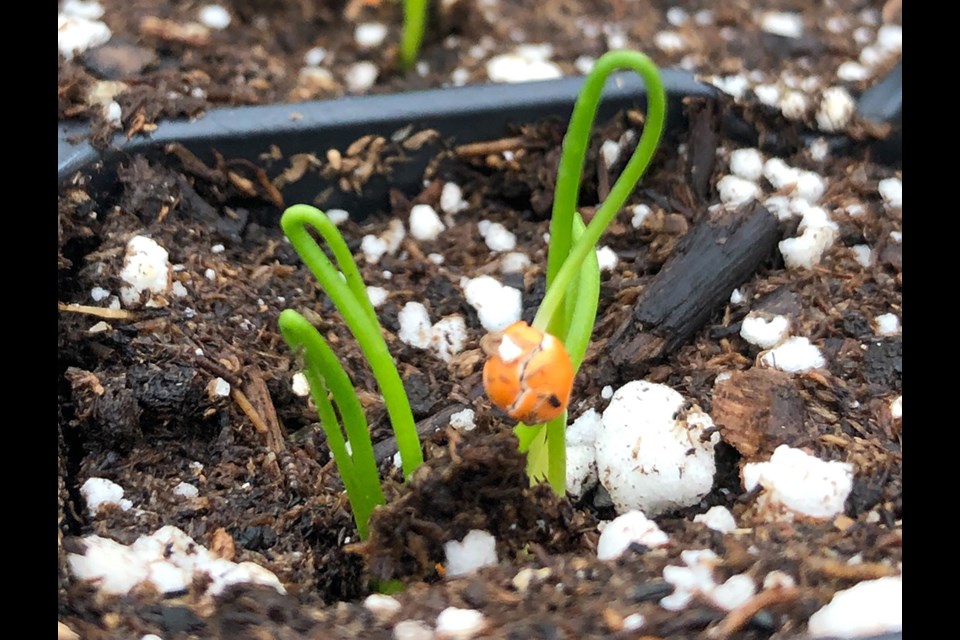Around this time of year, millions of Canadians are leafing through seed catalogues or browsing through seed racks in garden centres.
They are imagining all sorts of wonderful colour schemes for their garden and anticipating baskets of fresh produce.
Most of these good things are going to come from seeds. It all seems fairly easy, but in reality, I would guess that less than 50 per cent of all the seeds purchased actually grow to maturity.
This is not because the seeds are defective, even though we like to blame them for our bad luck; it's most often because we need a little more information on how to have success with seeds.
Today, depending on the variety, an ounce of new hybrid pansy seed can cost about 20 to 40 cents per seed, and a hybrid tomato seed can be between 20 to 30 cents each. If you're interested in saving money, there is some value in knowing at least a few of the basics about seed germination.
Firstly, most of us buy too much seed. We keep thinking that vegetable seeds are such a great investment so we buy a few extra, just in case some don't make it. That's like buying a year's supply of detergent when it's not on sale.
As a guide, many seed companies are now listing the number of seeds each packet contains, and seed catalogues are very good at indicating how many seeds there are per gram of seed. If you only need six tomato plants, why are you buying 200 seeds?
The next problem area is what to do with seeds once we have them. Some folks leave them in the kitchen, some end up in the garage, and yes, many get misplaced or lost.
The best place for virtually all your vegetable and flower seeds is in your freezer. Not only do you know where they are, but they are also being stored at a constant temperature and humidity. This stratifies them as well, which helps speed up germination.
Timing is everything as the saying goes, and this is especially true with seeds.
There has to be a natural progression from seed germination to planting outside in the garden. Unless you have a perfectly controlled environment in which to keep young seedlings, you must time your seeds to correspond with the readiness of your garden outside.
In other words, don't start outdoor tomatoes until early April. Some peppers, however, take up to 150 days to mature, so they can be started in late January and kept growing inside so that they are more mature when they go outside, allowing them enough time to ripen.
I'm also convinced that you need a cool, well-lit area in which to place your young seedlings during the early stages of growth. Adjustable lighting, adjustable heat and circulating fans are also important.
It takes a bit of trial and error to really achieve success with germination, but the basics are a good medium, clean starting trays, bottom heat, good light and humidity. Starter mixes are probably the easiest way to go, and if you use these mixes in cell packs or seed plug trays, your success will be far better. Many seed catalogues indicate the temperature at which the best germination can be achieved, and you can provide that temperature by means of a heating mat.
Keep in mind, however, that quality mats are not cheap.
Very few seeds need to be covered with a growing mix for optimum germination.
Most seeds need to be exposed to about 12 to 16 hours of high intensity light per day. They must, however, be kept humid.
After watering them in carefully, using quite hot water and a proper watering can or misting bottle, be sure you place some clear plastic or glass on top of the trays to hold in both the warmth and the humidity. Seeds need to be checked twice daily for moisture. Germination time will vary with the type of seed, but as soon as they sprout, immediately remove the covers, cool them down, provide lots of light and keep the humidity up. Maintain the soil to be just moist once the seeds are up and away. Be careful to balance your watering and humidity levels to prevent fungal issues from developing. Safer’s "Defender" is a good option if you need it.
Your greatest challenge will be to keep all your seedlings short and compact before they go into the garden. High light, moderate watering, cooler temperatures and good timing will help you achieve just that.
There is a lot of satisfaction in growing your own plants from seed, but germination takes a good deal of care and attention.
Seeds contain a little magic, and like a good magician, we must learn our craft well to help them perform up to our expectations.



